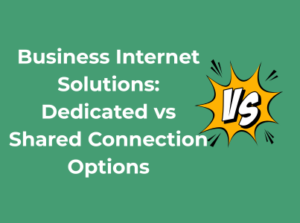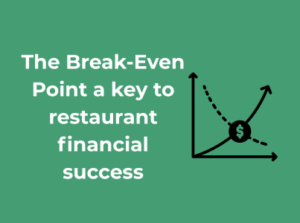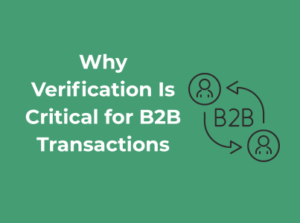If you’re new to accounting or a bit unsure about what single entry accounting even means, you’re not alone—and you’ve come to the right place! Let’s strip away the jargon and look at what makes this system both simple and useful for beginners or small ventures. Think of it as the “starter pack” of accounting systems: uncomplicated, lightweight, and effective for tracking basic financial activities. Ready? Let’s break it down step by step.
What Is Single Entry Accounting?
In essence, single entry accounting is a straightforward way of recording your financial transactions. Picture a casual ledger or even a notebook where you jot down money going in and out of your business. That’s it! For each transaction, only one record is made, focusing on either the income or the expense—hence the term “single entry.”
No need to record entries into separate accounts like “debit” and “credit” as in double entry accounting. Instead, you simply track cash flow. For example:
- Got paid $500 by a client? Write it down as income.
- Spent $200 on office supplies? Record it as an expense.
At its core, you’re just logging what’s coming into and going out of your business—simple, right?
Picturing Single Entry Accounting in Action
Let’s imagine you’re running a cozy coffee cart. Each day, you sell cups of coffee (income) and occasionally buy ingredients like milk and sugar (expenses). With single entry accounting, you might set up a structure like this:
- Date: The date of the transaction.
- Description: A short note—e.g., “Coffee Sales” or “Milk Purchase.”
- Amount: The monetary value involved.
You can set this up in a basic notebook, a spreadsheet, or even accounting software designed for single entry. The key is to keep it consistent and regularly updated—that way, you’ll always have a clear snapshot of how your business is doing financially.
Who Benefits Most from Single Entry Accounting?
Here’s where single entry is a real game-changer: it works best for individuals or small businesses that don’t have overly complex financial needs. A few examples:
- Sole proprietors: If you’re running your own gig without employees, single entry is likely all you need to keep tabs on your financials.
- Hobby businesses: Maybe you sell handmade art or baked goods on the side—it’s perfect for tracking a few transactions here and there.
- Simple expenses: Businesses with minimal costs or revenue streams can avoid overcomplicating things.
A key takeaway is this: if your finances are straightforward, single entry is an accessible way to track your money without drowning in details.
Best accounting software for business: Read More
Keeping It Manageable with Single Entry
Want my number one piece of advice for mastering this system? Stay on top of it. Small financial missteps—like forgetting to log transactions—can snowball into bigger headaches. Take a few minutes daily or weekly to update your records and don’t procrastinate! Trust me, it’s worth it in the long run.
How Single Entry Accounting Differs From Double Entry
Alright, let’s dive into one of the most common questions people have about single entry accounting: how does it differ from double entry accounting? On the surface, this might sound like a dry accounting concept, but don’t worry – we’re going to make it simple, relatable, and maybe even a little fun!
Single Entry: Simplicity at Its Core
Picture running your finances like keeping a basic cash journal. Every time money comes in or goes out, you jot it down in one place. That’s single entry accounting for you – it tracks transactions in just one column or account. There’s no complex balancing act going on; you’re simply recording what’s happening with your cash flow.
For example:
- You sell a product and record the $100 you earned.
- You pay your monthly electricity bill and write down the $50 you spent.
It’s quick, straightforward, and minimal effort. But it doesn’t give you the full picture – and that’s where double entry comes in.
Double Entry: The Two-Sided Story
If single entry is like noting down transactions in a notebook, double entry accounting is like orchestrating a duet. Every financial transaction has two sides, which means you record it in at least two accounts: one that gives and one that receives.
Here’s how it works:
- You sell that same product for $100. In double entry, you record $100 as revenue in your income account, but you also record it as an increase in your cash account.
- When you pay your $50 electricity bill, you reduce your cash account by $50 and also record it as an expense in your operating costs account.
The result? Everything balances nicely – assets always equal liabilities plus equity. It’s a great system for detailed, well-rounded financial insights, but it comes with a steeper learning curve (and sometimes a headache or two).
The Key Differences
Here’s a handy breakdown of how the two methods compare:
- Structure: Single entry is like a simple log, whereas double entry is a full-fledged system with balances and interconnected accounts.
- Complexity: Single entry is beginner-friendly and meant for small-scale operations. Double entry, on the other hand, requires a deeper understanding of accounting principles.
- Financial Insights: Double entry provides a wider, clearer view of your finances by tracking the “why” behind each transaction, while single entry sticks to the basics.
- Error Detection: Double entry makes it easier to spot mistakes because the books need to balance, but with single entry, errors might be harder to catch.
Which One is Right for You?
If your business is small and you’re managing straightforward transactions (think freelance gigs or a small coffee shop), single entry accounting might do the job. It’s efficient and stress-free. But if your operations are growing and you need a detailed view of your finances – or if your bank or investors require it – double entry might be worth the upgrade.
Benefits: Why Small Businesses Might Find It Useful
Starting or running a small business often feels like juggling countless tasks at once—managing customers, overseeing operations, and keeping an eye on expenses, all while trying to grow your venture. Amid this whirlwind, accounting can seem daunting. This is where single entry accounting can shine as a straightforward, time-saving solution for many small businesses. But why, exactly, does this method of accounting fit so well with small operations? Let’s explore!
Simplicity at Its Finest
Imagine keeping track of your finances the same way you’d jot down grocery expenses in a notebook. That’s essentially what single entry accounting is: simple, straightforward, and easy to understand. Unlike double-entry accounting, which requires balancing debits and credits for every transaction, single entry focuses on just recording transactions—like earnings and expenses—without the extra complexity. This makes it ideal for those who aren’t professional accountants but need a reliable system to track their business finances.
Time and Resource Savings
Small businesses often operate with limited resources. Hiring an accountant or learning a complex bookkeeping system may not be feasible early on. With single entry accounting, you don’t have to spend hours every week trying to decode financial jargon or set up complicated software. Everything is streamlined, giving you more time to focus on growing your business. Plus, you can start with minimal tools—a simple spreadsheet or even a pen and paper can suffice!
Cost-Friendly Solution
Let’s be honest—small businesses can rarely afford a full-fledged accounting software suite right away. Single entry accounting is attractive because it doesn’t require significant investments in technology or expertise. Simple tools, like Excel or Google Sheets, often get the job done. Plus, because the system is less complex, there’s less need for outside help, sparing you hefty accounting fees.
Clear Snapshot of Your Cash Flow
For many small businesses, keeping an eye on cash flow is a top priority. Single entry accounting does an excellent job of offering a basic, clear picture of how money moves in and out of your business. By recording income when it’s received and expenses when they’re paid, you can easily track whether your business is profitable, ensuring smart financial decisions as you go.
Great for Smaller or Simpler Operations
If you’re running a business without complex structures—like inventory management, partnerships, or multiple revenue streams—single entry accounting is often more than sufficient. For example, freelancers, solopreneurs, and service providers with basic financial transactions benefit from its simplicity without feeling bogged down in unnecessary detail.
Flexibility for Those Just Starting Out
One of the biggest benefits of single entry accounting is its flexibility. As you grow and your financial transactions become more complex, you can always transition to double entry accounting. Starting with a simpler system doesn’t lock you in—it simply gives you a practical starting point to manage your business finances with ease.
In a Nutshell
- Simplicity: Easy to understand and maintain, perfect for non-accountants.
- Time-Saving: No need for elaborate setups or hours of bookkeeping.
- Cost-Effective: Operates smoothly without expensive software or expertise.
- Clear Insights: Gives you a straightforward view of your cash flow.
- Flexibility: Scales with your growth when you’re ready to upgrade.
Common Scenarios Where Single Entry Works Best
Single entry accounting isn’t just a simplified bookkeeping method—it’s a practical solution for certain situations. While it might not fit every business, there are scenarios where it shines. Let’s dive into some common situations where single entry accounting is the ideal approach.
1. Startups and Solo Entrepreneurs:
If you’re just starting your business or working solo, chances are your transactions are straightforward. Maybe you’re offering freelance services, running a small online shop, or consulting clients for a fee. In these cases, a single entry accounting system lets you focus on getting the job done rather than swimming in complex bookkeeping methods.
Think about it: all you really need is to track income coming in and expenses going out. That’s it! No complicated credits or debits, just a clear record of your cash flow. Simple, right?
2. Cash-Based Businesses:
Do you run a cash-based business like a small café, a street vendor setup, or a side hustle selling handmade crafts? If most of your transactions are paid in cash (and there’s no intricate credit system involved), single entry makes tracking finances a breeze.
Instead of overcomplicating things, you can use single entry accounting to monitor your daily revenue and expenses with ease. It gives you a quick and clear snapshot of how your business is performing without the added layers of double entry.
3. Small Businesses with Minimal Inventory:
For businesses that don’t deal with a lot of inventory—such as service providers, consultants, or professionals like writers and designers—single entry is often sufficient. Since inventory tracking and asset management are more common in double entry systems, skipping them entirely works for these types of businesses.
For instance, if you own a graphic design business, you’re probably not concerned with inventory levels but more with logging invoices and payments from clients. This is a prime example of single entry accounting fitting in naturally.
4. Tax Filing for Simple Income and Expenses:
If your main goal is to stay on top of income for tax purposes, a single entry system can be a lifesaver. It’s a straightforward way to align your revenue and expenses for reporting without diving into detailed balance sheets or profit-and-loss statements.
Many single-entry users adopt this method simply to ensure that when tax season rolls around, they’re prepared to declare their earnings with no added stress. It’s a practical approach to meet compliance requirements without unnecessary complexity.
5. Temporary or Seasonal Operations:
Running a seasonal venture, like selling holiday decorations or offering summer lawn mowing services? For these short-term businesses, single entry provides simplicity and speed. Since the operation is temporary, there’s little need to set up a full-scale accounting system.
This way, you can focus on running your business while keeping an eye on profits and expenses—without burdening yourself with unnecessary processes for a few months of activity.
Practical Setups: Tools and Tips for Single Entry Systems
So, you’ve decided to go with single entry accounting—fantastic! It’s a simple, straightforward method that works wonderfully for many small businesses, solopreneurs, and freelancers who don’t want to get bogged down with complicated spreadsheets or accounting jargon. But how do you actually set things up? Let’s break it down into actionable steps with some handy tools and tips to make your life easier.
1. Choose the Right Tool for the Job
Your system can be as low-tech or tech-savvy as you like. Here are a few popular approaches:
- A Notebook: Yes, old-school is still cool. If you’re dealing with minimal transactions, grab a physical journal or bookkeeping ledger. Divide it into sections for income and expenses—just make sure it’s neat and easy to reference.
- Spreadsheets: Tools like Microsoft Excel or Google Sheets are ideal for single entry accounting. Create simple columns labeled Date, Description, Income, Expense, and Balance. Pro tip: Add basic formulas to make calculations easier.
- Accounting Apps: Platforms like Wave, Zoho Books, and even simplified versions of QuickBooks can be perfect for single entry. They save time and help keep everything organized in one place without requiring advanced accounting knowledge.
2. Organize Your Categories
To stay on top of things, you’ll need to categorize your income and expenses effectively. This will make reviewing your records (and yes, those inevitable tax seasons) a breeze. Here are some smart ways to do this:
- Income Categories: Break down the sources of your revenue. For instance, freelancers might have categories like client payments or product sales.
- Expense Categories: Organize your spending into buckets like office supplies, marketing costs, or subscriptions. Try to keep it simple—5-10 categories will do the trick for most small businesses.
With well-labeled categories, you’ll see patterns, which means better decision-making down the track. Plus, you’ll thank yourself when tax time rolls around!
3. Set a Routine (and Stick To It)
Accounting isn’t a “set it and forget it” process. Like watering a plant, you need to keep checking in. Establishing a habit of recording transactions regularly is key. Here’s how you can make it manageable:
- Set a Time: Whether it’s daily or weekly, block out 15-20 minutes to update your system. This ensures no receipts go unnoticed.
- Keep Records Handy: Store receipts, invoices, and other financial documents in one place—or snap photos and save digital copies for easy access.
Consistency is everything when it comes to smooth, accurate record-keeping.
4. Cross-Check and Review
No matter how simple your system is, occasional human error is inevitable. That’s why it’s a good practice to periodically review your records. Compare your manual entries or spreadsheet data with bank statements—this double-check ensures accuracy and helps you catch any discrepancies early on.
5. Back It Up!
If you’ve gone digital (and even if you’re using a spreadsheet), always back up your data. Cloud storage solutions like Google Drive or Dropbox are excellent options. You don’t want to lose months of meticulous work to a computer crash or misplaced ledger.
6. Keep Things Tax-Friendly
While single entry systems can work well for day-to-day tracking, they might feel a little bare-bones when tax season hits. To make things easier:
- Separate Personal and Business Finances: This helps you maintain clarity and avoid unnecessary headaches during tax filing.
- Consult a Professional: Even with a simple system, it’s worth checking in with an accountant or tax professional to ensure you’re ticking all the right boxes come tax time.
Pitfalls to Watch Out For When Using Single Entry Accounting
Single entry accounting can be a simple and straightforward way of managing your finances, especially if you’re running a small business or just starting out. However, as with any system, it’s not without its challenges. Let’s take a closer look at the main pitfalls you need to be aware of when using single entry accounting, so you can avoid headaches and keep your financial records clean and reliable.
1. Lack of Comprehensive Financial Tracking
One of the biggest drawbacks of single entry accounting is that it doesn’t give you a full picture of your business’s financial performance. Unlike double entry accounting, which records every transaction in two places (debits and credits), single entry only tracks things like cash inflows and outflows. This means:
- You won’t have a complete record of assets and liabilities.
- It becomes harder to detect errors or discrepancies in your accounts.
- Preparing for audits or tax reporting can get tricky, as key information could be missing.
The solution? Pair your single entry system with some supplementary records, such as a spreadsheet to track inventory, outstanding receivables, or liabilities. This extra step can help bridge the gap and give you more insights into your business’s financial health.
2. Increased Risk of Errors
Since single entry accounting doesn’t follow the double-checking mechanisms of debits and credits, errors can easily slip through unnoticed. For example, if you forget to record an income or expense, there’s no balancing entry to flag the mistake. Slip-ups like these can wreak havoc on your records over time.
Here’s how you can minimize errors:
- Maintain a consistent routine for recording transactions – don’t let them pile up!
- Cross-reference your records with bank statements or receipts weekly.
- Use digital tools or software to automate parts of the process and reduce manual entry mistakes.
While meticulousness is key, don’t be too hard on yourself – nobody’s perfect. Just make sure you set up processes to catch and fix mistakes quickly before they turn into bigger problems.
3. Limited Scalability
Using single entry accounting might work like a charm when your business is small, but as you grow, it can start to feel more like a roadblock. Larger businesses often deal with more complex transactions, multiple accounts, and higher compliance requirements that single entry simply can’t handle efficiently.
Signs that your business has outgrown single entry include:
- You frequently feel overwhelmed by the volume of transactions.
- Preparing financial statements is eating up more of your time.
- Your lender, investor, or accountant requests more detailed financial reports.
If any of these sound familiar, it might be time to consider upgrading to a double entry system. It may seem intimidating, but transitioning early can save you a ton of stress down the road.
4. Compliance Issues
Finally, many governments and tax authorities require more detailed financial records than single entry accounting can provide, particularly as a business grows. Missing data could lead to compliance issues, fines, or even audits. Yikes!
The best way to stay on the right side of the law is to double-check local requirements for business accounting and ensure your records can support any potential tax filings or audit needs. This might mean keeping extra documentation or hiring a bookkeeper to help out during tax season.






